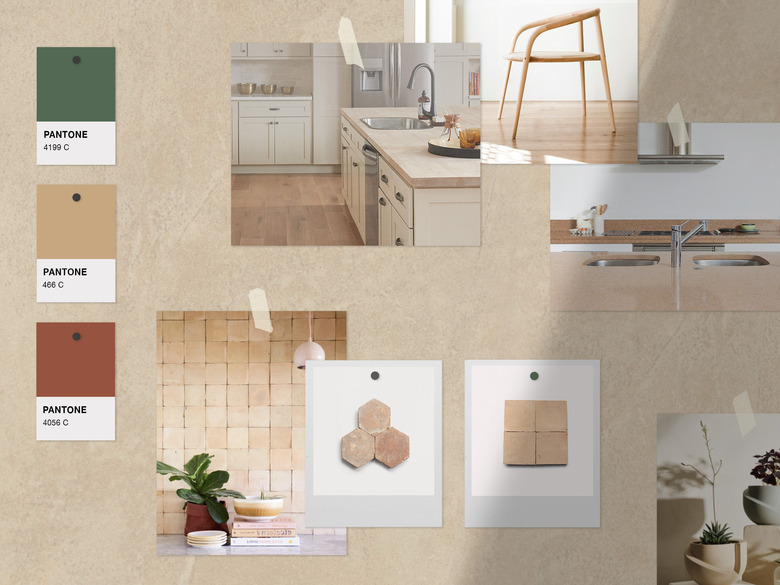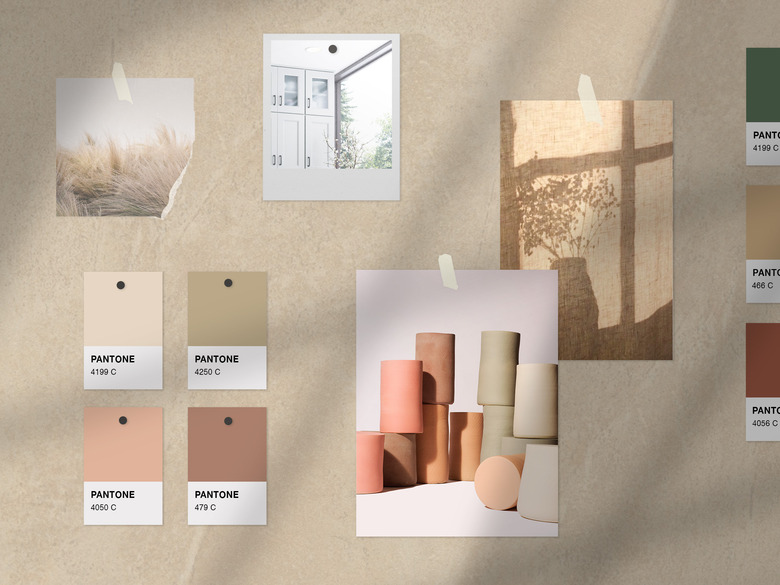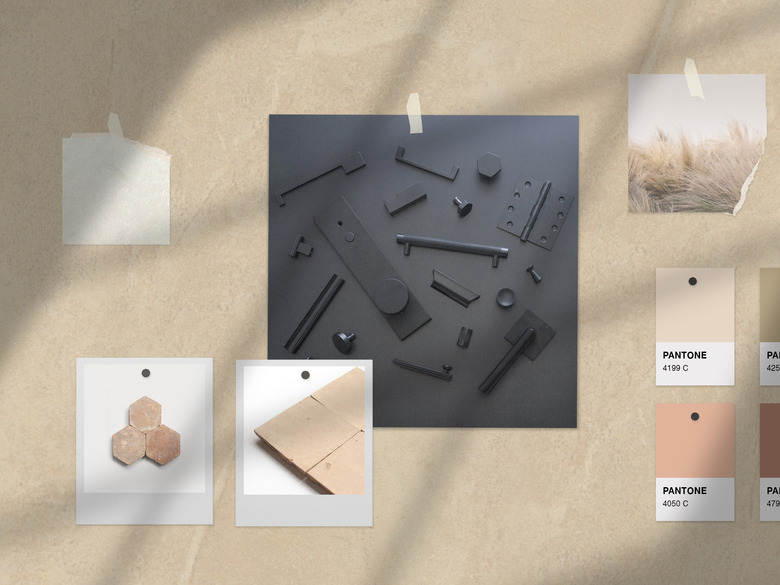How To Make A Mood Board To Solidify Your Kitchen-Reno Vision
The realization that you need to drastically overhaul your kitchen can dawn in many ways. Sometimes, it's seeing a dreamy photo on Pinterest and falling in love. Sometimes, it's tiny functional annoyances that build up over years. And sometimes, it's being stuck at home during a pandemic and realizing you need an upgrade, like, yesterday.
That was the case for Hunker creative director Paul Anderson. Over the past seven months, Anderson has been working remotely from his 1937 Spanish Revival-style home in Los Angeles, splitting creative duties with childcare duties as he cares for his one-year-old daughter while his wife works on the COVID-19 frontlines as a speech pathologist. In the midst of all the unknowns, his new normal has resulted in two things: spending a lot of time in the kitchen and a lot of time in his home office, which happen to be side-by-side.
"When you spend that much time in a space, you kind of go crazy trying to figure out how to make it the best place in the house," says Anderson.
The outcome of his musings is an upcoming kitchen renovation, punctuated by gutting his cabinetry in place of a new layout from Cabinets To Go. But the first step of any design project, says Anderson, should always be the mood board.
"You can't ad hoc the design process," he explains. "There's a process you have to go through, and the inspiration board anchors that whole process of choosing the aesthetic details."
Whether you're about to start your own home renovation or just want tips on building the ultimate mood board for future projects, here's how a creative pro tackles the design journey.
Gather Inspiration
Gather Inspiration
First of all, a mood board is essentially a collection of images that will be your north star throughout the renovation, and is handy to act as a visual guide for any contractors you might hire. Before choosing the hardware or picking out the paint, this is your first step — so take a moment, Anderson recommends, to think about your vision and gather inspirational elements together.
That process can involve researching the architectural history of your home (Anderson hopes to nod to the Spanish Revival roots of his space), identifying layouts you like (in Anderson's case, spacing the appliances strategically throughout the kitchen instead of leaving them lumped together), or highlighting meaningful details (like the handmade Moroccan tile he was hoping to incorporate after traveling to Morocco).
Once you've taken inventory of all those elements, you can start searching for visual inspiration. "Try to find images that have the overall feel you're looking for," Anderson says. "Every detail doesn't need to be a super specific reference, and it might not even be an image of a kitchen. Just focus on getting the vibe right, and then backfill the details after that."
The goal for his own design? "Achieve a mix of traditional and classic shapes and styles, but pair with modern details — and incorporate handmade textures that will be emphasized through the natural light in the space," he says. "Both ideas nod to the original architecture and history of the space, but also achieve a contemporary perspective."
To build the mood board itself, Anderson's go-to programs are Keynote and Sketch so he can manually collage his inspiration images to see how they play together. But if you want to opt for a less DIY approach, you can always use tried-and-true Pinterest to easily collect all of your inspirations in one place.
Decide Color, Texture, and Tone
Decide Color, Texture, and Tone
In Anderson's opinion, the hardest part about turning your mood board into a real-life kitchen is properly capturing color, texture, and tone. "If you can nail those elements, that's what's going to end up making the space feel right," Anderson says. "And then the rest of the details will just fall into place." Do you want it to feel cozy? Airy? Energizing? All of these factors will play out in the color palette of the space and the textures of the materials you use.
For his personal project, he had a specific feel in mind: "A natural and subdued color palette, rustic textures, but overall the tone should feel clean, streamlined, and modern," he explains.
To figure this out for yourself, his recommendation is to start by looking at the elements of your space that have the largest surface area (like the floors, cabinets, and countertops) to make sure they reflect your desired mood. "That's why I chose the Malibu White shaker cabinets, because I knew they'd work well with the tile and hardware we had already chosen," Anderson says. "Since the cabinets are such a focal point of the kitchen, you really want them to feel like an organic part of the space so that everything looks cohesive."
Another pro tip for locking in tone: Get samples of the pieces you're considering. "Especially in the age of ordering things online, you can't always rely on a really great inspirational image because you don't always know what those things are going to feel like until they come into your space. Texture, color, and tone read a lot differently in a space vs. in an image."
With Cabinets To Go, you can get samples of all the options you're considering, and can browse tons of images from its digital catalogue, blog, and explore page to help you really picture your plan coming to life. Anderson also visited a Cabinets To Go showroom to see his options in person.
Be Malleable
Be Malleable
As your mood board starts coming together, don't get too attached. Falling in love with your vision is a good thing (it means you're on the right track!) but you also want to allow space for it to evolve.
"It's really important to understand that the process is going to change and you're going to question all of your decisions," Anderson says. "The mood board is not like a box you check off and move on from. You have to continually revisit it. You have to understand the inspiration board is malleable."
As you hone in on specifics, that's where flexibility is key. "Here the actual details start to come together: handmade terra cotta backsplash tile paired with streamlined, matte black fixtures," he says of the above detail inspiration. As he works through the process, though, he's cognizant that elements can shift.
Once you've collected your inspiration, decided on your vibe, and prepared yourself to keep an open mind for changes in the design process, you're ready to start renovating. As for Anderson, that means one completely upgraded kitchen space — from functionality to style to feeling — coming right up.


